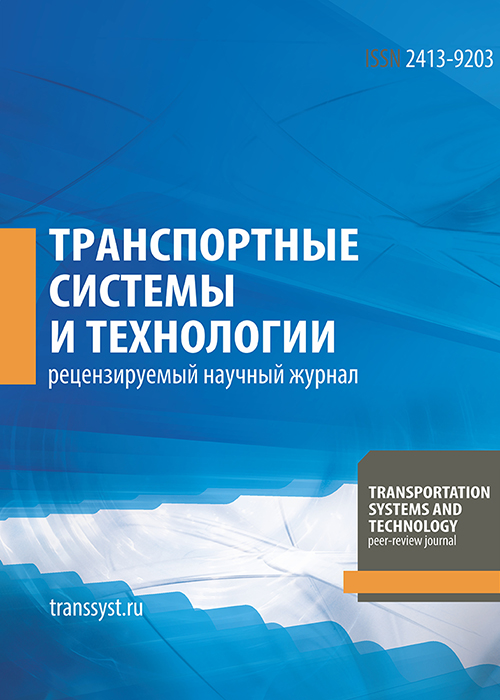Suspension system of hyper loop
- Authors: Kim K.I.1, Kim K.K.1
-
Affiliations:
- Emperor Alexander I Petersburg State Transport University
- Issue: Vol 3, No 2 (2017)
- Pages: 9-10
- Section: Original paper
- URL: https://journals.eco-vector.com/transsyst/article/view/7943
- DOI: https://doi.org/10.17816/transsyst2017329-10
- ID: 7943
Cite item
Full Text
Abstract
Suspension system of hyper loop
Full Text
This paper is devoted to the development of the suspension system for the high-speed transport of a type hyper loop. This system consists of a continuous longitudinal non-magnetic electroconductive strip (μ and σ are the strip permeability and conductivity (μ = μ0 = 4π×10-7 H/m)), which are placed in the lower part of the pipe, and the vehicle superconducting solenoids. It is possible to use a structure of permanent magnets instead of superconducting solenoids (2a×2b are the solenoid dimensions).
These systems have a large efficiency, high economical efficiency and the better weight characteristics. This paper deals with the problem of the optimization of geometrical parameters for the suspension system and gives some recommendations for the choice and definition of these parameters.
The configuration of a superconducting solenoid can be different, however, the better form of the solenoid is a rectangular one for the fixed width of a strip (where c and d are the strip thickness and the width).
In the case of the high-speed tube transport the strip must be narrow with a rectangular cross-section.
The calculations showed:
- The end effects caused by the limitation of the strip width lead to the change of the electromagnetic drag and suspension forces. When the strip width is less than c1 (c1 depends on the clearance) the electromagnetic forces are smaller than the corresponding forces of the infinitely wide strip. When the strip width is more than c1 the situation is opposite. At c2a[1+5a(a+h)] the strip width doesn’t influence on the electromagnetic forces. h is the suspension height above the strip.
- The change of the suspension and drag forces with changing the strip thickness occurs in the opposite direction. In comparison with the case of an infinitely thick strip the suspension force decreases but the drag force increases. For solenoids with a high levitation quality more than 60 at the speeds more than 50 m/s the depth of the field penetration is equal to 0.05 m.
- With the increasing of the solenoid displacement ε (ε is the solenoid displacement from the strip axis) until its value remains moderate (ε*= 2ε/c-2a <0.8), the suspension and drag forces change but a little while the lateral force grows rapidly. In this area the lateral force changes with the displacement due to the law which is close to the rectilinear law.
- The problem of the choice of the strip thickness may be presented as the extremal problem of this kind:
Levitation forcemax, Drag forcemin, v=v0
(v0 is the cruising speed).
The problem of the choice of the strip width is reduced to the evaluation of this parameter at the given values of εmax and (T/L)max.
- The magnetic interaction of solenoids leads to the change of the suspension and drag forces. The levitation system is in the better conditions than the traction one, the interaction between solenoids can be used to decrease the drag force in comparison with the case of magnetically isolated solenoids. It is possible to provide if the solenoid currents circulate in the same direction.
- At the given suspension force the minimum drag force is achieved when the solenoid has an elongated rectangular form. At achieving the same suspension force with the help of magnetically interacting solenoids (in case when the solenoids are not far from each other) the drag force can be reduced to the value corresponding to the drag force which is peculiar for a single solenoid. The replacing of a single solenoid by a solenoid system with effective using their magnetic interaction to decrease the drag force we can consider as a method to improve the reliability without energy losses.
- We can assume that the levitation system of a vehicle of Hyper Loop will be consisted of four solenoid groups. Each group will be consisted of two or three solenoids. To reduce the drag force the currents in these coils must flow in the same direction and the distance between the adjacent solenoids should be minimal.
About the authors
Konstantin I. Kim
Emperor Alexander I Petersburg State Transport University
Author for correspondence.
Email: kimkk@inbox.ru
Russian Federation
Konstantin K. Kim
Emperor Alexander I Petersburg State Transport University
Email: kimkk@inbox.ru
Russian Federation
Supplementary files









